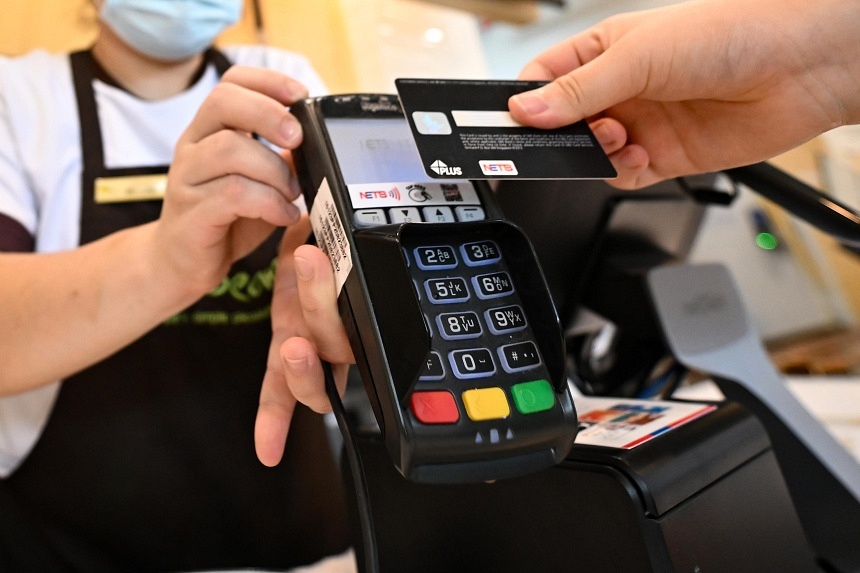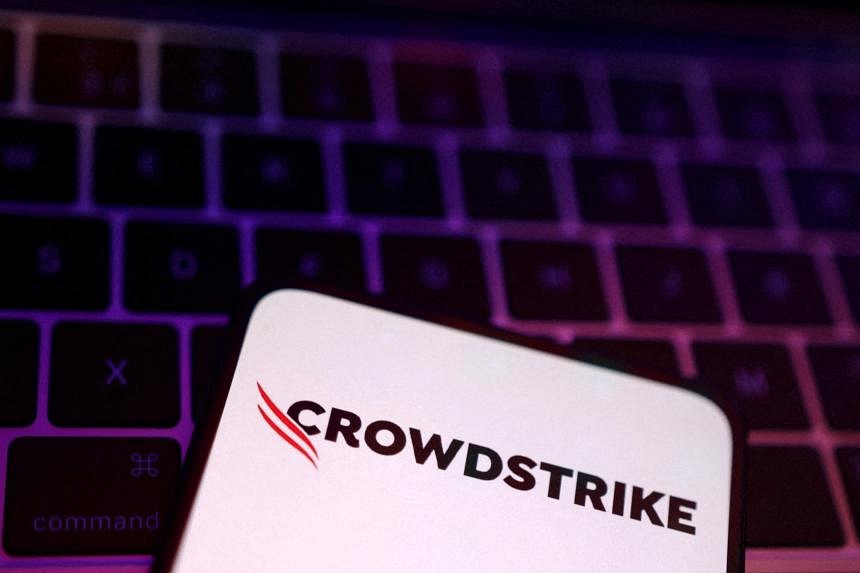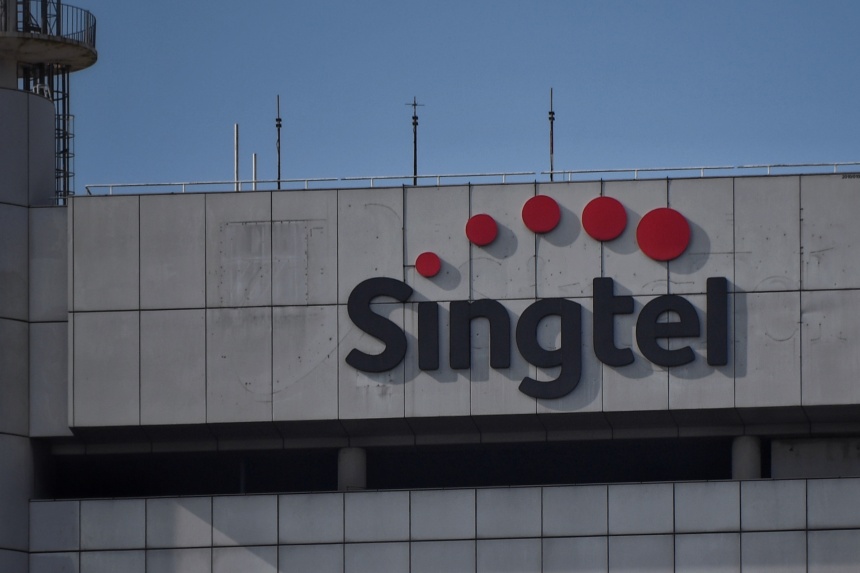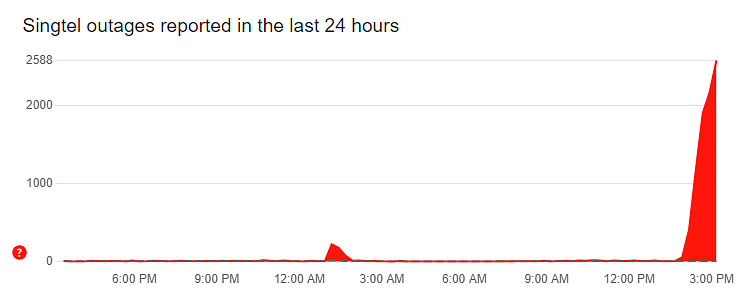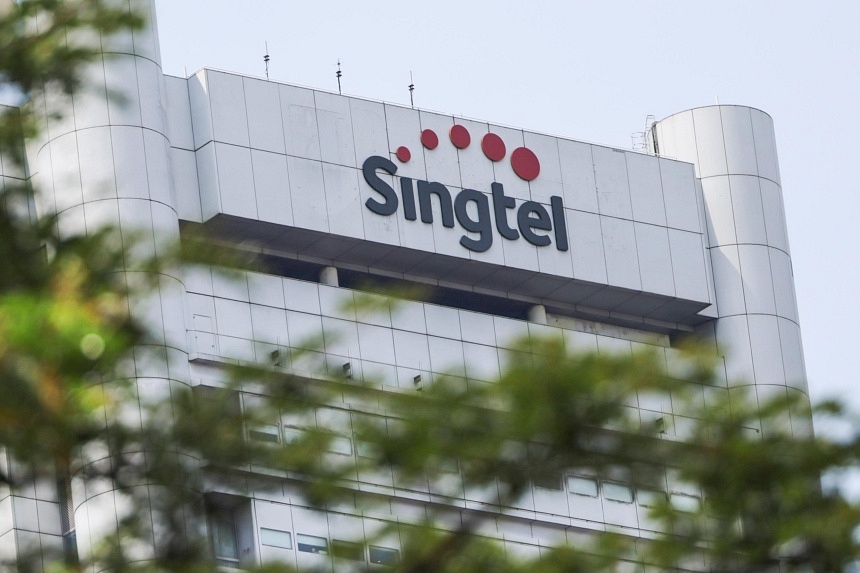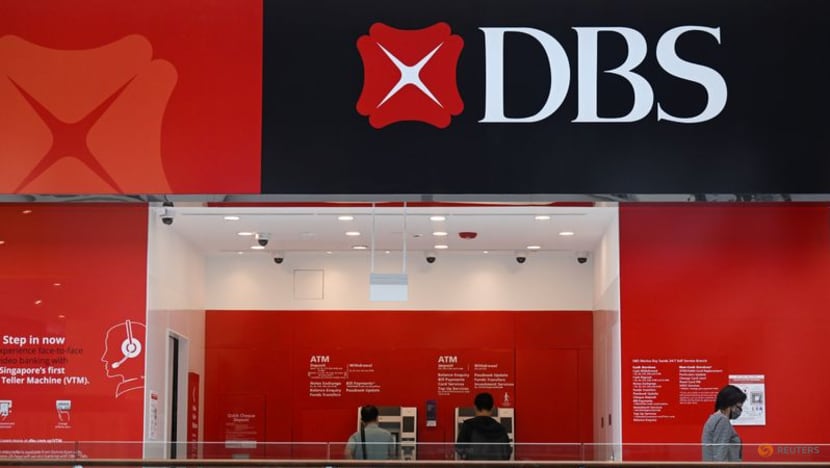Emergency, business hotlines restored after hours-long Singtel landline outage
There were more than 2,500 reports as at 3.10pm on service outage website Downdetector. ST PHOTO: KUA CHEE SIONG
Sarah Koh
Oct 09, 2024
SINGAPORE - The hotlines of the Singapore Civil Defence Force (SCDF) and police, as well as those of hospitals and banks, could not be reached on Oct 8 in an unprecedented islandwide disruption involving Singtel’s telecommunications network.
The disruption lasted for more than three hours before services progressively resumed between 6pm and 7pm.
Netizens began submitting outage reports as early as 2pm on crowdsourced outage website Downdetector when they could not get through public service hotlines. At 3.18pm, there were 2,706 reports on Downdetector.
In a Facebook post at around 4.20pm, the SCDF and police urged members of the public to use SMS instead.
“Members of the public who are experiencing difficulties reaching us at 995 or 999 can SMS SCDF at 70995 or SPF at 70999 instead,” said the police. “The safety and well-being of the public is our top priority. We will provide updates as soon as more information becomes available.”
In an update at around 6.50pm, the SCDF and police said 999 and 995 hotline services were restored.
It is not known how many people were affected by delays in reaching emergency services.
An annual statistics report released by the SCDF on Feb 21 showed it responded to 246,832 emergency calls in 2023. In 2022, it responded to 256,837 calls.
Hospitals and medical centres affected included KK Women’s and Children’s Hospital (KKH), Changi General Hospital (CGH), Singapore General Hospital (SGH), SingHealth and National Cancer Centre Singapore.
KKH and SGH advised patients to contact them via e-mail since their phone lines were down.
CGH, SingHealth and National Cancer Centre Singapore directed patients to use the SingHealth Health Buddy app for appointments, medication orders and billing services.
A National University Health System (NUHS) spokesperson said the organisation was alerted to intermittent connection issues affecting its phone lines in the afternoon, due to the disruption.
“Our patients were, however, still able to manage their appointments or send in their queries via the NUHS app and our e-mail channels,” said the spokesperson, adding that its phone lines were fully restored by 5.35pm.
Mr David Kwok, 74, told The Straits Times he had tried to use his home phone to call SGH at about 2pm to reschedule a medical appointment, but was unable to get through.
Attempts to call Singtel’s customer service hotlines were also unsuccessful, said the retired engineering officer.
Mr Kwok visited Singtel’s flagship store in Somerset to find out what was wrong, and was initially told there might be an issue with the payment of his bills, before he was informed of the service disruption.
“One thing I was very worried about was the 999 and 995 numbers,” he said. “What happens if there’s a fire?”
Other public hotlines affected were those of SimplyGo, a unified ticketing system by the Land Transport Authority, and Changi Airport.
The customer service hotlines of DBS Bank, OCBC Bank and UOB also did not work, with the banks advising customers to use their banking apps instead.
In its Facebook post at around 4.50pm, DBS said: “We have also been informed by Nets that this industrywide issue may also impact transactions, such as QR, credit and debit, and Nets card transactions, via some Nets terminals.”
Ms Chan Chiew Yen was not able to use Nets when she tried to pay for skincare products at Takashimaya at around 5pm.
The 50-year-old executive did not have sufficient cash on hand for her purchase, which added up to more than $200.
She was puzzled as to why there have been such problems with cashless payments.
“I feel it’s time that I start to set aside larger amounts of physical cash, just in case of more outages like these,” she said.
Payment via DBS’ PayLah! and the national PayNow instant fund transfer services were not affected, said DBS.
Many office landlines were also down.
Ms Mariam, a customer service supervisor at a public service agency, said issues with her company’s customer service hotline began at around 2.15pm, and were resolved by 5.30pm.
“While my staff were glad they could take a break during the disruption, our case loads have piled up. The team will have to work twice as hard tomorrow to clear our pending cases,” said the 26-year-old.
Singtel’s first post on Facebook went out at around 3.40pm, noting that some of its customers, including public service hotlines, “may be experiencing intermittent fixed voice service issues”.
Replying to queries from ST, a Singtel spokesman said affected services included residential, corporate and public services. “From 4.45pm, services were progressively restored, starting with emergency services.”
“This is an isolated incident and there’s no evidence to suggest it is a cyber-related event,” said the spokesman, adding that services were fully restored by 6.30pm.
“We are working diligently with our partners to investigate the root cause to prevent this from happening again.”
The Infocomm Media Development Authority (IMDA), which regulates the telecommunications sector, said it is looking into the disruption, which started at 2pm.
“Singtel was required to restore services urgently, with emphasis on key government services,” said an IMDA spokeswoman. “Services, including 999 and 995 hotlines, were progressively restored from 5pm, and all services have been restored by 6.30 pm.”
“IMDA takes a serious view of any service disruption to public telecommunications services, and will investigate the incident,” she added.
According to service outage website Downdetector, there were more than 2,500 reports as at 3.10pm. PHOTO: SCREENGRAB FROM DOWNDETECTOR

